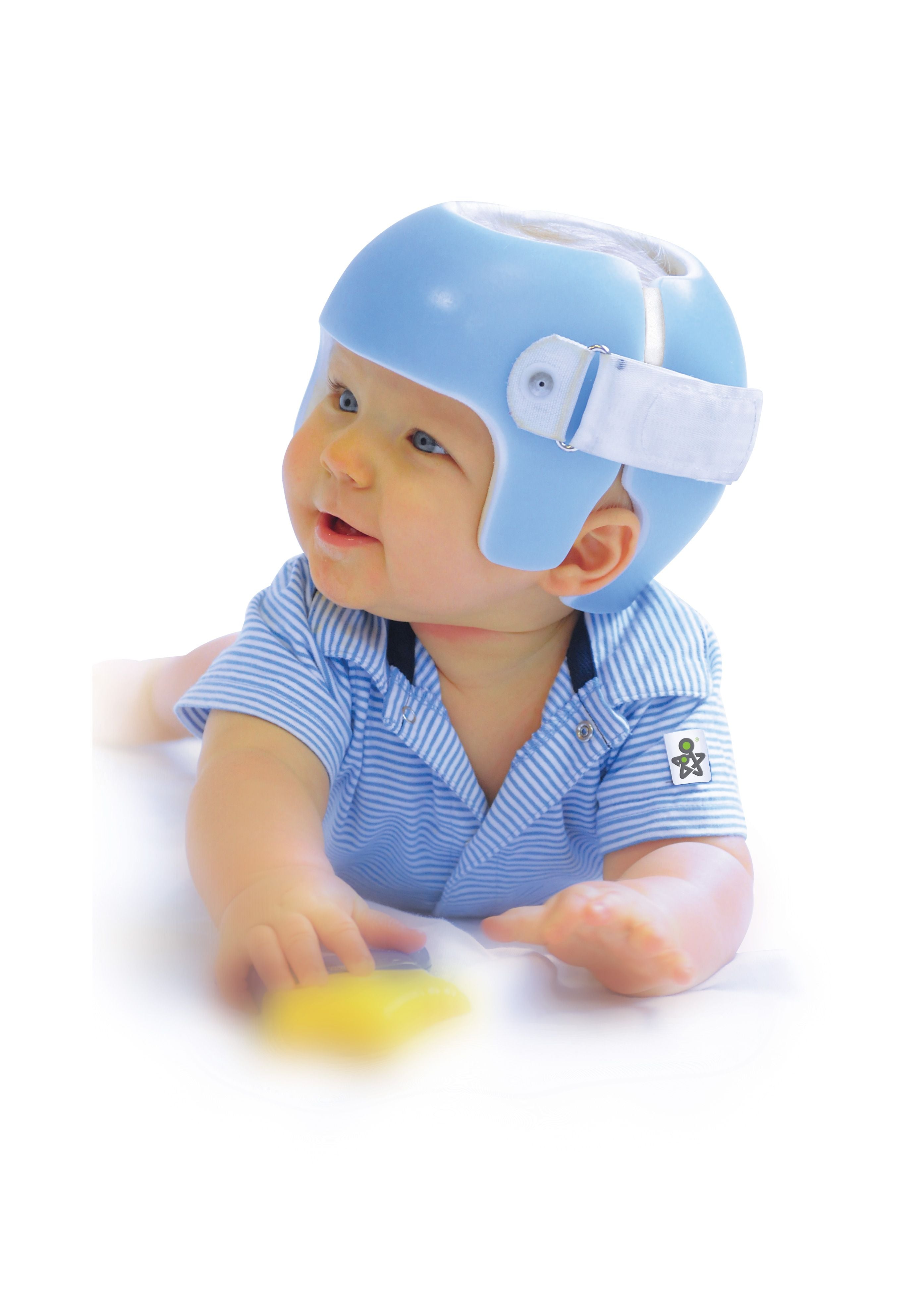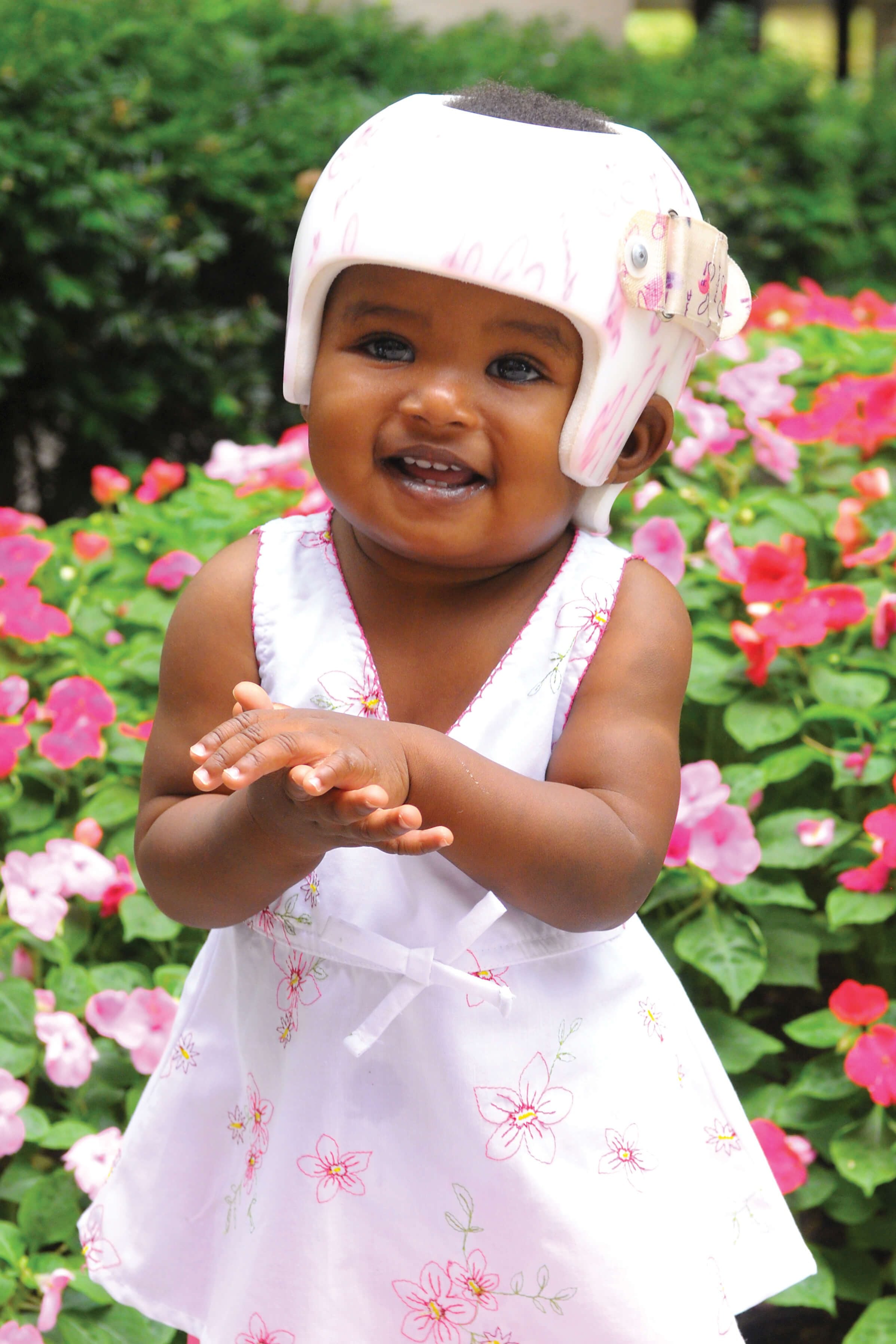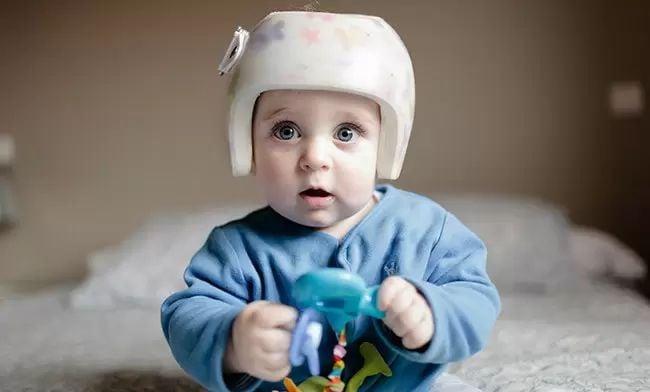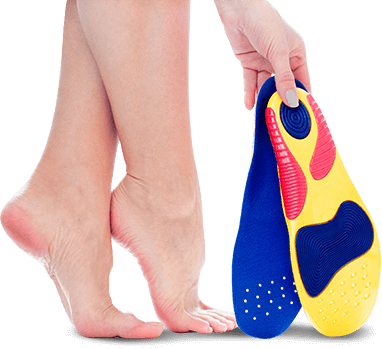Posted in Plagiocephaly
Plagiocephaly: Management of Baby Flat Head
)
Initially, the suggested course of action for reshaping the flat head would be repositioning. This would be the recommended for the first 4-5 months. For mild to moderate plagiocephaly, more than half will resolve by 6 months of age by repositioning alone. If the plagiocephaly is moderate to severe and if repositioning is not effective a helmet would be the next option.
Helmets work very well at reshaping the flat spot when repositioning has not been effective.
Please contact us for more information on plagiocephaly and infant hemets
| Posted in:PlagiocephalyHelmetsBaby |
How a Plagiocephaly Helmet Can Help Your Baby
)
Custom plagiocephaly helmets for baby flat head are an option for those that have had limited success with counter-positioning. Helmet use provides best results if started early while the head is still growing. The best time for using a custom plagiocephaly helmet is still between 5-6 months of age.
Helmets are effective for plagiocephaly because they create a space where the flat spot is. As the child grows the child will fill in the space that is created by the helmet. No matter how the child sleeps, a proper fitting plagiocephaly helmet will encourage growth in the flattened area. Results are based on growth. If a child starts with a plagiocephaly helmet early there is greater growth remaining thus better improvement.
Please contact us for more information on plagiocephaly and infant hemets
| Posted in:Orthobility BracingPlagiocephalyHelmets |
When to Use a Plagiocephaly Helmet
)
The use of a helmet for plagiocephaly is an effective way to re-shape the head if counter-positioning has not been successful. Usually, for mild plagiocephaly, counter-positioning is a viable option and should be tried first if a child is 3 to 6 months of age. If head shape does not improve, then a helmet is another option. Optimal time to start helmeting is between 5-6 months of age.
For moderate to severe plagiocephaly, helmet use may be the first option, especially if the client is 6-10 months of age. Time is of the essence since head growth has such a short window (80% is grown in the first year). It is during growth that the head shape can be influenced.
Remember, every child is different so these are just basic guidelines. See your orthotist, family doctor or physiotherapist regularly to monitor the progress of the head shape.
Please contact us for more information on plagiocephaly and infant hemets
| Posted in:PlagiocephalyHelmets |
Plagiocephaly Counter-Positioning and Helmeting
)
Counter-positioning: Placing your baby on the part of the head that is not flat is the first line of defence to help re-shape the head. If started early enough, the mild flat spot may correct itself since the head is growing. The best time to start counter-positioning is before 5 months of age since the baby hasn't developed the muscle strength to over-ride pads/towels etc.
It is very important to use counter-positioning techniques when the baby is sleeping or lying down on the back. Always avoid the baby sleeping on the stomach. Some will use a rolled-up towel to tilt the baby at a 45-degree angle to avoid contact on the flat spot. Placing toys on the opposite side of the crib to encourage turning away from the flat spot is also effective when the baby is awake. Speak to your pediatrician about these counter-positioning techniques.
Try also to make sure that your baby does not spend too much time in a baby car seat. In this situation, your baby may still favour lying on the flat spot for long periods of time.
Supervised tummy time a few times a day is another way of keeping your baby off the flat spot. It is also very important in helping the baby interact and gain neck and shoulder muscle strength. It will not be their favorite position at first but with time they will like it.
Check with your physician/pediatrician to see if torticollis is also present. This could contribute to the plagiocephaly and should be addressed right away. Torticollis will be addressed in a future blog.
Counter-positioning can be a very useful technique to re-shape the head of a baby with mild plagiocephaly. Results can be seen within a month or so if the techniques are achieved. If counter-positioning is not effective, helmeting would be another option.
Please contact us for more information on plagiocephaly and infant hemets
| Posted in:PlagiocephalyHelmets |
My child has plagiocephaly, what can I do?
)
It is very important to keep in mind that plagiocephaly rarely affects normal brain development; it is mostly a cosmetic concern. At the same time cosmetics is important in this day and age. Many parents tend to feel guilty if they do not try and correct the flat spot "I don't want my child to say that we didn't do anything for the flat spot when they are 18 years old".
It is very important to discuss the different options. Getting information about counter-positioning and helmet therapy is the first step for parents to help them decide what options are available for their child with plagiocepaly.
Next time, we will discuss counter-positioning and helmet therapy.
Please contact us for more information on plagiocephaly and infant hemets
| Posted in:PlagiocephalyHelmets |



